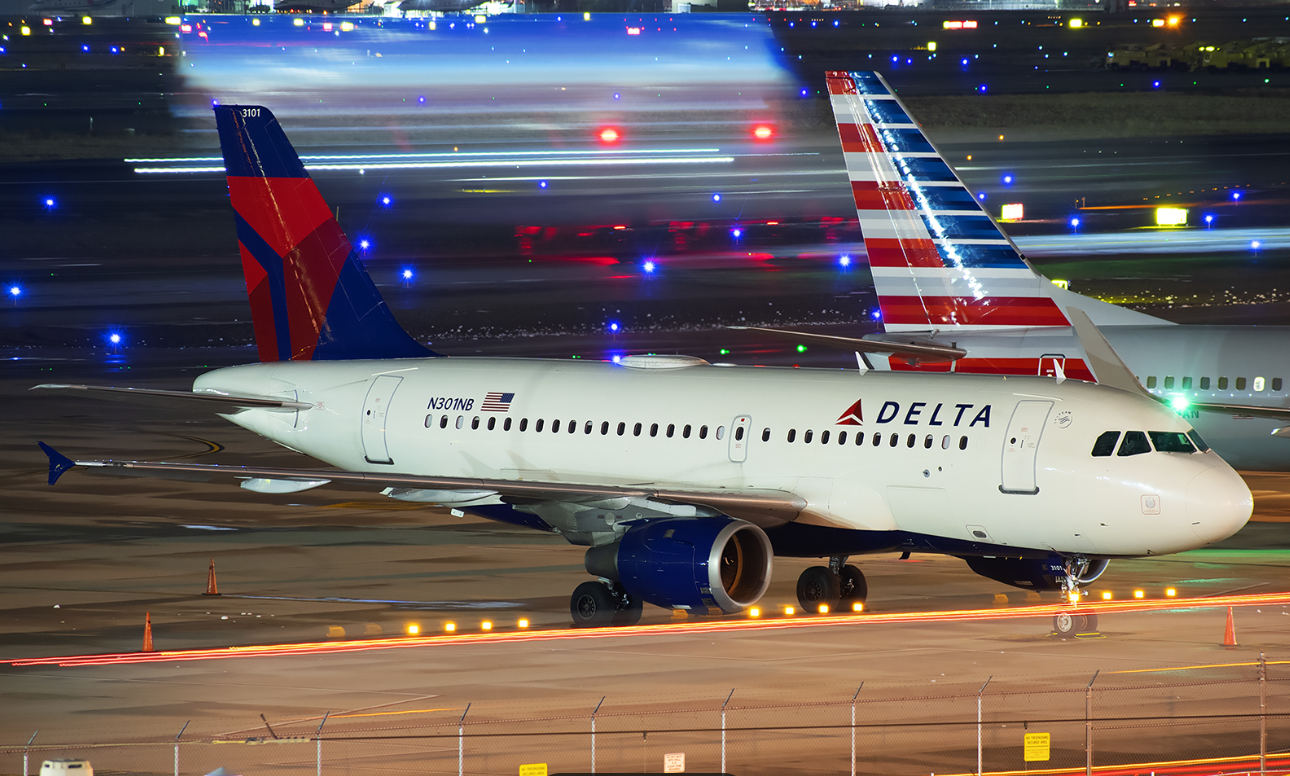Delta Flight and Air Force Jet in Near Miss Over Washington D.C.
A Delta Air Lines Airbus A319 narrowly avoided a mid-air collision with a U.S. Air Force T-38 jet over Washington, D.C., on March 28, 2025. The incident occurred near Ronald Reagan Washington National Airport, raising serious concerns about air traffic coordination in restricted airspace.
What Happened? Understanding the Near Miss
Delta Flight 2983, carrying passengers to Minneapolis-St. Paul International Airport, was climbing after takeoff when its onboard Traffic Collision Avoidance System (TCAS) detected a fast-approaching aircraft. At the same time, air traffic controllers saw the U.S. Air Force T-38 jet heading toward the same airspace.
Quick action from the controllers led to immediate altitude and heading adjustments for both aircraft, successfully preventing a disaster. According to preliminary FAA reports, the planes came within a dangerously close distance before corrections were made.
This incident underscores the critical importance of modern air traffic control systems and strict flight coordination in restricted airspace like Washington, D.C.
Why Is Washington D.C. Airspace So Dangerous?
Washington D.C. has one of the most tightly controlled airspaces in the United States due to security measures and high-volume traffic. The presence of government buildings, military bases, and restricted flight zones creates a complex environment where civilian and military aircraft operate simultaneously.
Factors Contributing to Airspace Risks in Washington, D.C.:
| Factor | Explanation |
|---|---|
| Restricted Zones | Several no-fly zones exist due to national security concerns, limiting airspace for commercial aircraft. |
| Military Operations | Frequent military training exercises and patrols can lead to unexpected airspace interactions. |
| High Traffic Volume | Ronald Reagan Washington National Airport is one of the busiest in the U.S., making coordination essential. |
| Airspace Regulations | Strict regulations require precise timing and execution for takeoff, landing, and routing. |
With such challenges, even minor miscommunications can lead to close calls, like the one experienced by Delta Flight 2983 and the Air Force T-38.
FAA Investigation and Safety Enhancements
The Federal Aviation Administration (FAA) has launched an investigation into the near miss, working with the U.S. Air Force to understand what went wrong. Preliminary reports suggest the military aircraft was conducting a training exercise and may have unintentionally entered the commercial flight’s path.
Aviation experts believe the FAA may implement new measures such as:
- Revised military training flight paths to reduce intersections with civilian air routes.
- Advanced AI-powered air traffic monitoring to detect and prevent such incidents before they escalate.
- More automated alerts for pilots and controllers to improve reaction time in critical moments.
The investigation will also determine whether airspace protocols need to be updated to prevent future near-miss incidents in high-risk areas.
How Common Are Near-Miss Incidents in U.S. Airspace?
Air traffic incidents like this one occur more often than the public realizes. In 2023 alone, the FAA recorded a 15% increase in reported near-miss events, highlighting the need for enhanced safety measures.
Comparison of Near-Miss Incidents (Past 3 Years)
| Year | Reported Near Misses | Percentage Increase |
| 2021 | 280 | – |
| 2022 | 320 | +14% |
| 2023 | 368 | +15% |
While most of these incidents do not lead to collisions, they indicate underlying risks that require immediate attention. This latest near-miss involving a Delta flight highlights the need for continuous improvements in air traffic safety.
What Can Be Done to Improve Aviation Safety?
To prevent future incidents, experts recommend:
- Enhanced Pilot Communication: Ensuring both military and civilian pilots receive updated instructions in real time.
- Improved Radar and AI-Assisted Monitoring: AI-based traffic management could reduce human error and response time.
- Revised Flight Protocols: Better coordination between civilian airlines and military training operations.
- Stronger Regulations: The FAA may tighten existing airspace management rules to lower the chances of close encounters.
These measures, if implemented effectively, can make air travel safer for both passengers and flight crews.
Conclusion: Strengthening Air Traffic Management for a Safer Future
The near miss between Delta Flight 2983 and the U.S. Air Force T-38 underscores the complexities of managing restricted airspace in Washington, D.C. While the quick response of air traffic controllers and pilots prevented disaster, the incident serves as a reminder of the risks that exist in U.S. aviation.
With increasing air travel demand and more frequent military training operations, it is essential to strengthen safety protocols. By integrating AI-powered monitoring, improved pilot communication, and updated airspace regulations, authorities can work toward eliminating near-miss incidents altogether.
As the FAA’s investigation unfolds, passengers and airline operators alike will be watching closely for safety updates that enhance the reliability of the nation’s air travel system.
[USnewsSphere.com / FAA]





